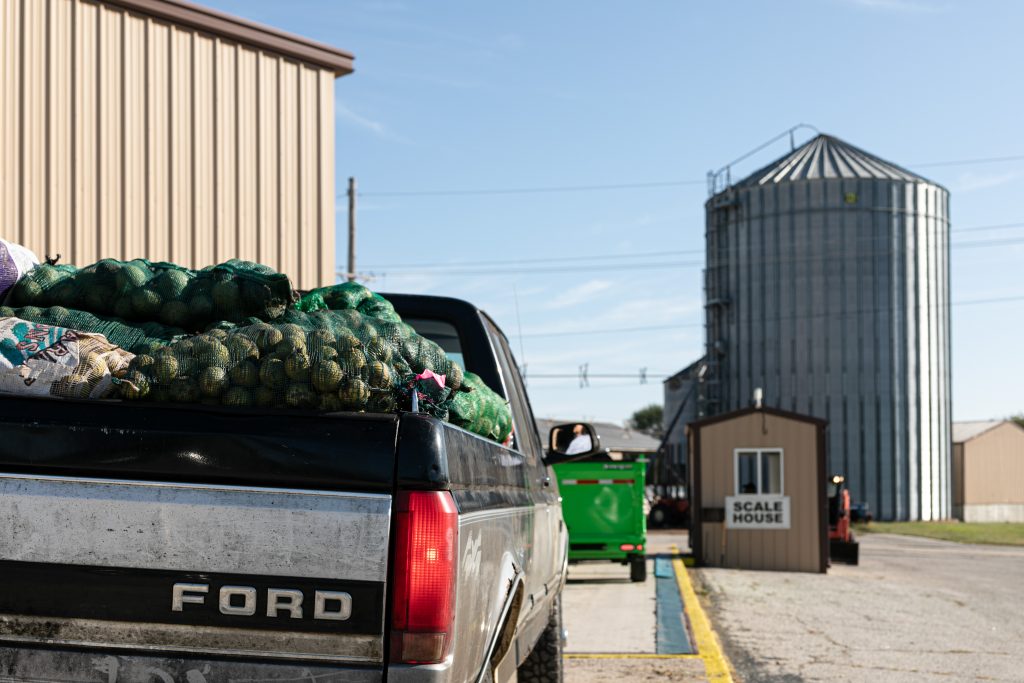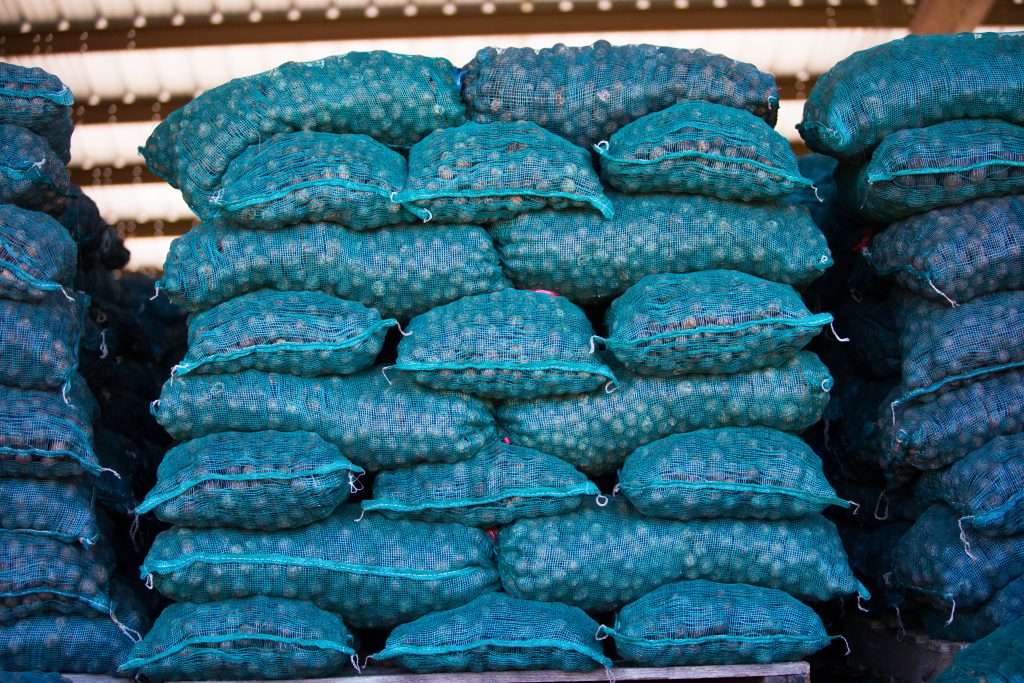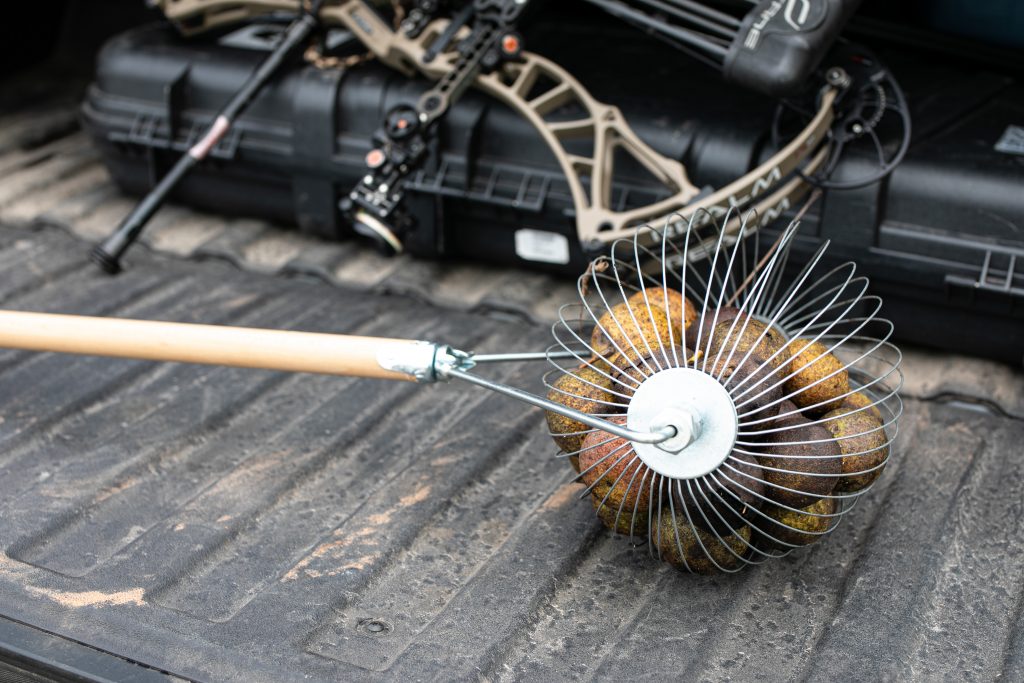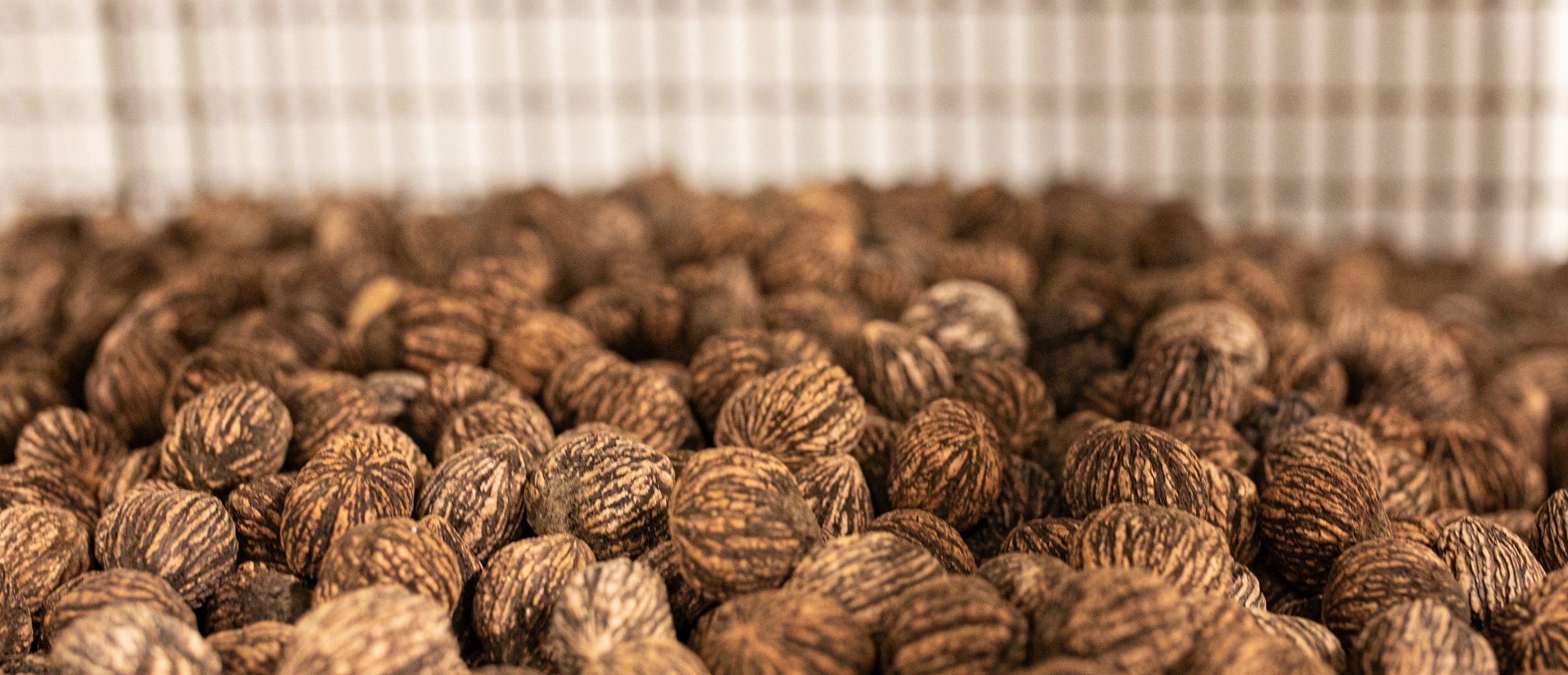Juxtaposition Of The Harvest
Hunting and the black walnut harvest season merge in the fall to provide a wild, sustainable resource.
“It’s harvest season,” Miles Brite says in early October as he works his way through the halls of Hammons Products Company headquarters in Stockton, Missouri. Like a deer processor on opening day, there is no time for small talk this time of year.

Brite, the procurement manager for Hammons Products Company, is in his first year of black walnut harvest season in 2021 and the company’s hulling, cracking and cleaning machines are humming with the initial black walnut deliveries from locals in the community. Outside Hammons’ office, locals line up with truck beds, and even the occasional hatchback, full of harvested black walnuts. Many have been customers for years, hitting the woods and fields to collect the uniquely American black walnut, a tradition in a dozen states that is as ingrown in their cultural fabric as hunting is to many others. More times than not, the two activities intersect as well.
“Fall is a time of harvest, whether you’re talking about different commodities like grains, produce, or in our case, it’s the native black walnut,” Brite said. “What’s been growing all spring and summer is now ready to be brought in, ready to be processed and ready to be turned into food.”
Preparations for the Harvest
Stockton, Missouri, with a population of less than 2,000, is nestled in the Ozarks of southwest Missouri just north of Bass Pro Shops and Cabela’s headquarters in Springfield. It is home to Hammons Products Company, a third-generation, family-owned business and the sole mass provider of black walnut products (for food and industrial use) in the U.S. Like turkey hunters gear up for wild turkey season in the spring and deer hunters prepare for the rut in the fall, Stockton readies for the black walnut harvest season from Oct. 1 to Nov. 15 each year. It’s a six-week dash that harvesters look forward to every year, and its reach extends well beyond the Missouri borders.

Hammons Black Walnuts has hulling station operators in 12 states across the Midwest and into pockets of the Northeast, with more than 200 hulling stations east and west of the Mississippi River Valley. During the month-and-a-half harvest season, nearly 25 million pounds of black walnuts can be brought in when the crop produces en masse. In 2021, the price per 100 pounds of black walnuts ($20) was the highest ever in Missouri, and just slightly lower ($18 per 100 pounds) east of the Mississippi, Hammons Products Company CEO Brian Hammons said. An average truck bed can bring in upwards of $120 per delivery, he estimated.
Hammons is steeped in the tradition of black walnuts going back to his grandfather’s founding of the company in the 1940s, and he said he learned to appreciate the great outdoors and hunting through the juxtaposition of the company’s harvest season and that of fall hunting.
“Folks who collect black walnuts are very similar (to hunters) in that they enjoy getting out in the fall, creating memories with family and friends,” Hammons said. “Sometimes we scout ahead of time just like you scout for turkey and deer. That preparation is important. I love talking to people who are line and the stories they tell, what they do with the money they earn and the lessons they learn and the lessons they teach to their children.”
In similar fashion, Brite said he believes the overlapping of black walnut harvest season and hunting season is no coincidence. Perhaps it’s the universe’s way of connecting the culture and preservation of hunting with black walnut production and vice versa.
“I see this as a time of year I’m out scouting, looking for sign … scratching, roosts, rubs,” Brite said. “Black walnut trees are synonymous and go hand-in-hand with the harvest territory that you’d be looking for as a turkey hunter or as a deer hunter. Those seasons overlap dramatically, when you’re looking to harvest a turkey or a deer, you should be also looking to harvest black walnuts just the same.”
Healthy Habitats. Healthy Harvests.
Just outside Stockton, one of Hammons Product Company’s black walnut development orchards is home to thriving deer and wild turkey populations. Josh Abercrombie, Hammons director of orchard development, manages this and other development orchards that produce improved variety black walnuts – a nut with enhanced genetics compared to the wild-harvested crop. Abercrombie said the habitat improvement work to enhance black walnut production also benefits wild turkeys and other wildlife. He listed timber stand improvement work, thinning of nonnative trees to open the canopy and create more vegetative growth on the forest floor, as well as eliminating elm and hackberry that are not beneficial to wildlife, as just a few examples of work done to impact both the black walnut orchard, wild turkeys and more.

Black walnuts are not a preferred food source of Eastern wild turkeys. They will eat them on rare occasions, but the nut is not listed as an item found in wild turkey habitat studies, mainly due to the size of the hull and slow decomposition time, said John Burk, NWTF district biologist in Missouri and surrounding states.
Although not beneficial as a food source for wild turkeys, black walnuts do have key secondary uses for outdoorsmen and women, as well as other industries. Brite notes that Hammons Products Company produces a number of abrasive media from the shell that can be used to tumble and clean brass for reloaders, and trappers still boil their traps with black walnut hulls to dye the traps, preventing excessive rust from forming. Hammons is also looking into current carbonization research; by carbonizing black walnut shells, studies are being done to see if the hulls can be turned into a soil additive that can enrich and enhance soil mixtures instead of using harsh chemicals.
And, of course, there’s this little known fact: The Statute of Liberty was once cleaned with a black walnut shell abrasive cleaning agent more than a decade ago. Even lady liberty benefitted from the peripheral uses of this American nut.
Sustainable and Delicious
Not to be confused with the English walnut grown in California and available worldwide, the black walnut is a wild resource native to the U.S. that contains a robust, earthy flavor. Similar to wild game, the “nut meat” of the black walnut has a distinct taste compared to the common, store-bought walnut. It goes well with baked goods and compliments many wild game recipes, like the one created by Pete Muller, NWTF Communications director (see sidebar, The Stockton burger).
Best of all, harvesting black walnuts is something anyone can do, much like hunting. No license is needed, you only need to find a tree or grove, with permission if not on your land, and gather them while their hulls are mostly green. Many avid harvesters use a “Nut Wizard,” a rolling basket that collects them off the ground. Load them in a basket or truck bed and deliver them to the nearest hulling station (www.black-walnuts.com) where you’ll be paid for the weight after they’re hulled.

Hammons continues to support habitat work related to mast production of black walnuts while also benefitting wildlife. The two outdoors activities dovetail in the fall and throughout the year in regards to conserving the natural resource. Whether you’re scouting for deer or turkeys in the fall or picking up black walnuts for the harvest season, there’s a good chance one intersects with the other in certain parts of the country, with lasting memories and stories to come from both.
“When managed appropriately and when their environments are protected, these black walnuts, indigenous to America, have an incredibly endearing characteristic to them that very few things have,” Brite said. “You can draw that same parallel and same comparison about wild turkeys and deer. The tradition of harvesting black walnuts throughout the middle of the country is the same as the tradition of going on a turkey hunt with friends and family.
“These trees are not only a natural resource, they’re something we should be protective and mindful of. It’s very much the same stewardship and the same hard working, dedicated people who are out there picking up these nuts and also out there hunting and doing so ethically. Each of them has a unique story as to why they continue to embrace and practice an American tradition.”
